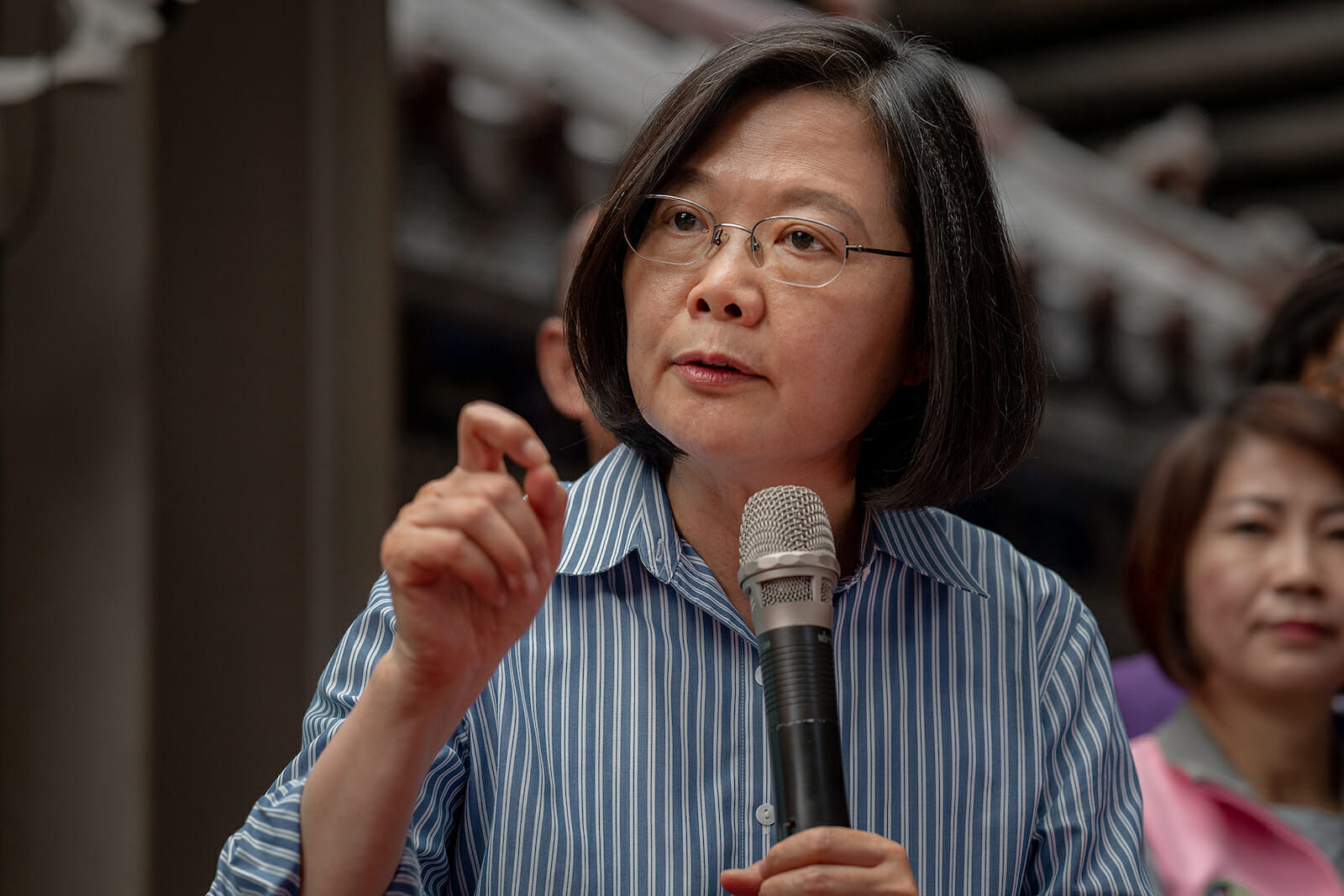
In Face of Chinese ‘Aggression’ Taiwan Beefs Up its Own Defenses
Taiwan will step up efforts to become more “self sufficient” in its defence capabilities in the face of “increasing threats” from China, according to a senior Taiwanese official.
Taiwan recently accused China of “reckless and provocative” action after two Chinese air force jets crossed a meridian line between Taiwan and China, tacitly understood as a border between the two countries.
Chinese bombers and warships have also recently conducted drills around Taiwan, the latest military maneuvers near the self-ruled island that the Taiwanese official denounced as “coercion” and a threat to stability in the region.
The official, who did not wish to be named but is based at Taiwan’s Representation Office to the EU and Belgium, said the recent incidents “highlight” the need for Taiwan to become more “self sufficient” in strengthening national defence capabilities, including domestic production of fighter jets and submarines.
The diplomat pointed out that Taiwan is already building its own supersonic training jets to boost the island’s air capabilities and has set aside more than 21 percent of its defense budget this year for the development of indigenous weapons.
Under pressure from China, Taiwan has had difficulty since the 1980s in buying weapons and other defence equipment from anyone but the United States or upgrading its existing arsenals.
The official said the aim would be, increasingly, to produce its own “advanced” defence and military equipment. “This is necessary in order to be able to defend ourselves. This does not mean that we will stop coopering with others.”
Projects include an Indigenous Defense Submarine programme and new advanced training jets.
Taiwan’s so-called Indigenous Defense Submarine (IDS) is undoubtedly the most ambitious of its planned indigenous naval weapons programs. Proposals to build a fleet of eight diesel-electric submarines were mooted as early as 2001. In August 2016, Taiwan opened a Submarine Development Center (SDC), with an eye towards the production of the island’s first indigenously produced submarines.
But it is only now that the IDS has begun to move towards fruition.
The CSBC Corporation has been contracted to produce eight submarines, the specifications of which are known only approximately. Sources indicate a displacement between 1,200 and 2,400 tons, a top speed of 17 knots underwater and an operating range of 6,000 nautical miles. CSBC reportedly hopes to deliver the first submarine by 2024.
Taiwan will, additionally, produce 66 training jets at a cost of NT$68.6 billion, to replace aging AT3 trainers and US-made F5 fighters that rookie fighter jet pilots in Taiwan’s air force have been using for more than 30 years.
The design of the new supersonic trainer aircraft will be based on F-CK-1, including the same Honeywell engine, but will reportedly carry additional fuel. Despite its resemblance to the F-CK-1 Ching-kuo fighter, the Advanced Jet Trainer will be upwards of 80 percent of an all-new design.
Taiwan hopes that the aircraft will begin flight testing in 2020, with the delivery of the full order of 66 aircraft to be completed by 2026.
By 2026, the fleet of advanced trainers will be delivered to seamlessly replace the military’s AT-3 trainer aircraft and F5 fighter jets, which are over 30 years old. The Ministry of National Defense (MND) decided to adopt the Aerospace Industrial Development Corp.’s (AIDC) XT-5 “Blue Magpie” design for the trainers.
For the time being, though, Taiwan still leans particularly heavily on the United States, by far its most important ally for its defence capabilities, a reliance reinforced recently when the State Department approved the possible sale to Taiwan of a pilot training program and maintenance and logistics support for F-16 aircraft currently at Luke Air Force Base in Arizona.
The $500 million package covers the costs associated with the program including flight training, participation in approved training exercises, training munitions, supply, and maintenance support, and spare and repair parts.
U.S. military sales to self-ruled Taiwan, which China claims as its territory, is an irritant in the relations between the world’s two largest economies.
China has never renounced the use of force to bring Taiwan under its control and the Taiwan official, a defence expert, denounced China’s “increasing aggression” towards Taiwan and other regional neighbours, including Japan and Philippines, also subject to recent Chinese military harassment.
In an attempt to counter fears, a Chinese diplomat in Brussels pointed to a speech at the start of the year by Chinese President Xi Jinping which, said the official, “contained nothing” which suggested China sees conflict with Taiwan as imminent. However, Xi’s comments about support for peaceful “reunification” with Taiwan included a warning that “we do not promise to renounce the use of force and reserve the option to use all necessary measures” to prevent Taiwan’s independence.
Speaking recently at a video conference, Taiwan President Tsai Ing-wen said “forces working against freedom and democracy are becoming more active around the world” and accused China of “breaking a tacit agreement that has served the interests of peace and stability over the past two decades.”
U.S. National Security Adviser John Bolton tweeted: “Chinese military provocations won’t win any hearts or minds in Taiwan, but they will strengthen the resolve of people everywhere who value democracy. The Taiwan Relations Act and our commitment are clear.”
Tsai said, “We could not agree more.”
Fraser Cameron, Director of the Brussels based EU/Asia Centre, said that “while there were sound reasons for Taiwan to build up its indigenous defence capacity, it would have to be careful in manoeuvring between its main protector (U.S.) and claimant (China).”
A well-placed EU source added, “China always tries to put pressure on governments and companies that are potentially willing to sell or transfer technology to help with Taiwan’s indigenous programs in order to sabotage/retard that development. That is one of the major obstacles to these programmes in terms of getting outside help.”
The United States has no formal ties with Taiwan but is bound by law to help provide the island with the means to defend itself and is its main source of arms.
This year marks the 40th anniversary of Taiwan-U.S. ties under the Taiwan Relations Act, following Washington’s decision to ditch formal recognition of Taiwan in favour of China in 1979.
